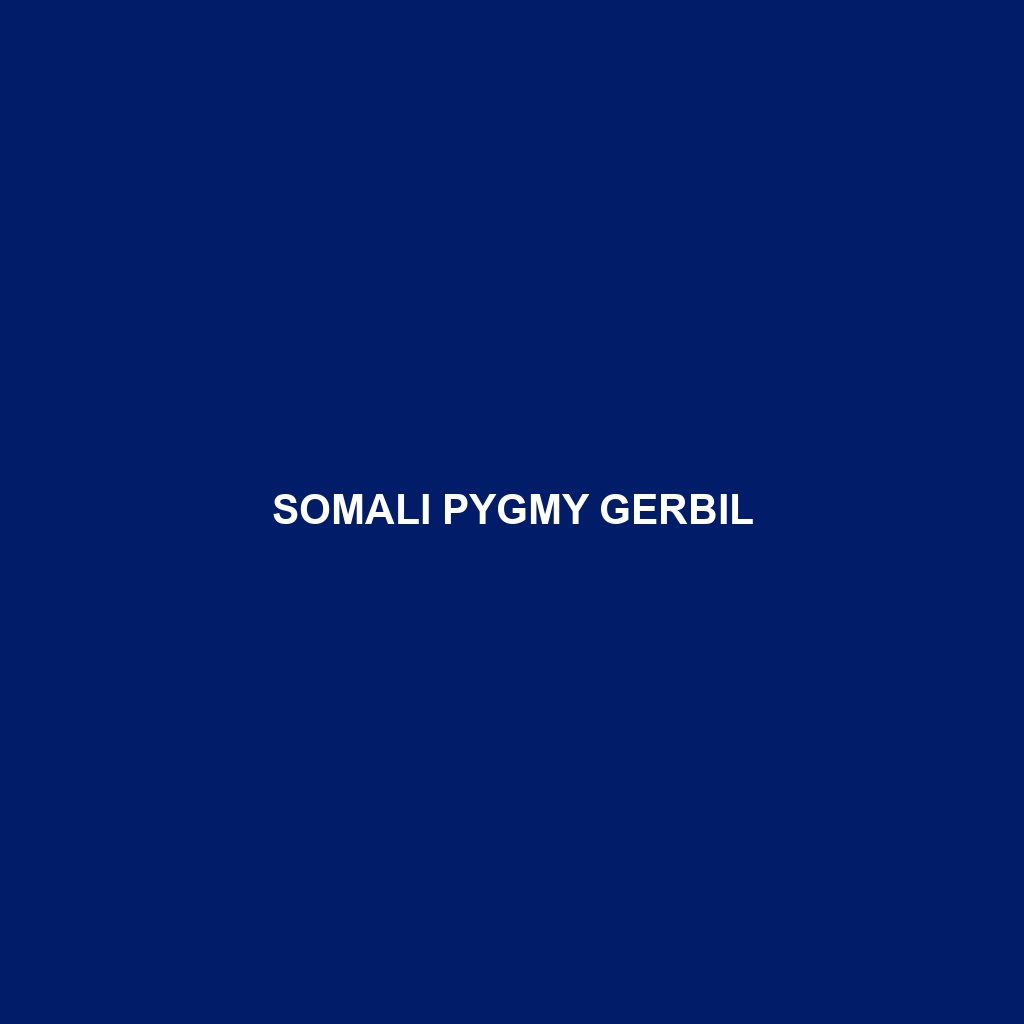Somali Pygmy Gerbil
Common Name: Somali Pygmy Gerbil
Scientific Name: Gerbillus furvescens
Habitat
The Somali Pygmy Gerbil is primarily found in the arid regions of Somalia and neighboring parts of East Africa. This small rodent prefers sandy deserts and semi-arid grasslands, where it can burrow into the ground to escape extreme temperatures and harsh sunlight. Their habitat is characterized by sparse vegetation and limited rainfall, creating a niche that is vital for their survival.
Physical Characteristics
Somali Pygmy Gerbils are small in size, typically measuring about 8 to 10 cm in length, excluding the tail, which can be an additional 10 to 12 cm long. They feature soft, sandy-brown fur that blends seamlessly into their desert habitat, providing excellent camouflage. Distinctive for their large ears and long, tufted tails, these gerbils have a robust body structure suited for their burrowing lifestyle. Their feet are adapted for digging, with small, strong claws that help them navigate through sand and soil.
Behavior
These gerbils exhibit primarily nocturnal behavior, becoming active during the cooler hours of the night. Somali Pygmy Gerbils are social creatures and are often seen in pairs or small groups. They communicate through a series of chirps and squeaks, and they are known for their agile movements and playful nature. Digging intricate tunnel systems is a typical behavior, serving as shelters from predators and harsh weather conditions.
Diet
The diet of the Somali Pygmy Gerbil mainly consists of seeds, grains, and vegetation. They are foragers, often gathering food during the night and storing it in their burrows for later consumption. This rodent’s feeding habits are crucial for seed dispersal in their habitat, contributing to the ecological balance. They primarily consume seeds from grasses and various small plants, adapting their diet to the seasonal availability of food sources.
Reproduction
Somali Pygmy Gerbils have a relatively high reproduction rate, with females capable of breeding year-round, although breeding peaks are often seen during the more favorable rainy seasons. A typical litter consists of 2 to 6 offspring that are born after a gestation period of about 20 to 25 days. The young are born blind and helpless, relying entirely on their mother for the first few weeks of life. Notably, parental care in gerbils includes nursing and keeping the young warm in their burrows.
Conservation Status
The Somali Pygmy Gerbil is currently classified as “Least Concern” by the IUCN, but they face threats from habitat degradation and climate change. Continued monitoring of their population is essential, particularly as their natural habitats undergo changes due to expanding human activities.
Interesting Facts
– Somali Pygmy Gerbils can jump up to three feet in the air when startled, showcasing their agility and quick reflexes.
– They have an impressive ability to survive on minimal water intake, deriving most of their moisture from the food they consume.
Role in Ecosystem
Somali Pygmy Gerbils play a vital role in their ecosystem as seed dispersers. By consuming and burying seeds, they help promote plant growth and maintain the balance of their arid environment. Additionally, they serve as a food source for various predators, including birds of prey and snakes, thereby contributing to the food web of their habitat.
